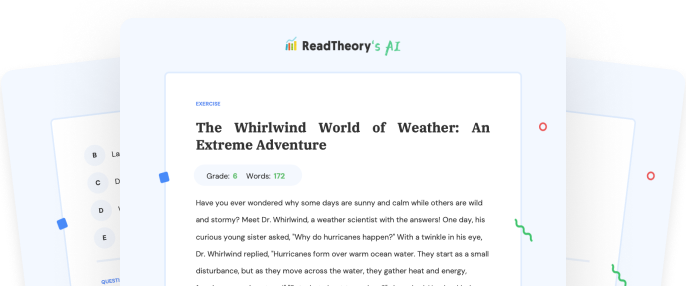Transform Your Teaching
with AI-Powered Worksheets
With ReadTheory’s Instant Worksheet Builder, you can create engaging, grade-appropriate worksheets tailored to your students in minutes. Spark curiosity, save time, and empower critical thinking with AI-powered tools designed for teachers like you.


From Chaturanga to Chess: A Journey Through Time
The game of chess, a beloved pastime and a prominent symbol of intellectual prowess, has a rich history spanning over a millennium. Its roots can be traced back to the 6th century Indian game Chaturanga, a four-player war strategy game representing infantry, cavalry, elephants, and chariotry, governed by dice. From India, it spread to Persia, where it was reimagined as Shatranj, and the pieces began to take on their modern roles. With the Islamic conquest of Persia, the game made its way into the Muslim world and eventually into Europe, where it underwent significant transformations in the 15th century. The pieces assumed their current powers; the queen became the most potent piece, the bishops acquired their diagonal sweep, and the element of dice was discarded, making chess a pure skill-based game. These changes, known as 'Mad Queen Chess,' gave birth to the game as we know it today. The game's appeal lay not only in its strategic depth but also in its ability to cross cultural and social boundaries. From the royal courts of Persia and India to the public coffee houses of 18th-century Europe, the game became a universal symbol of strategic thinking and intellectual challenge. It dealt not with luck, but with careful planning, foresight, and intricate tactics. In the modern world, chess continues to command respect and admiration. It's a game that fosters cognitive skills, nurtures strategic thinking, and sharpens problem-solving ability, making it a cherished part of our cultural and intellectual heritage.
Question 1
What did the game of Chess symbolize in the ancient world?
Wealth and prosperity
Social status
Strategic thinking and intellectual challenge
Musical talent
Physical strength
Question 2
Where did Chess originally originate from?
Europe
Persia
Africa
India
America
Question 3
What key changes occurred to Chess in the 15th century?
Introduction of dice
Reduced number of players
Introduction of new pieces
Pieces assumed current powers and dice was removed
The board was expanded
Question 4
What does playing Chess nurture in the modern world?
Physical fitness
Singing ability
Cognitive skills and strategic thinking
Drawing skills
Cooking skills
Question 5
What was the ancient Indian game from which Chess evolved?
Shatranj
Chaturanga
Mahabharata
Kalari
Jallikattu
 or share via
or share via

Assign the ReadTheory pretest to determine students' reading levels.

Why Teachers Love
Instant Worksheet Builder?

Tailored Content for Every Student
Craft worksheets with passages and multiple-choice questions customized to your chosen topic and grade level, ensuring relevance and engagement.

Save Hours
of Prep Time
Our AI, Lexi, generates complete worksheets—passages, questions, and answers—in minutes, freeing you to focus on teaching, not planning.

Standards-Aligned Learning
Every worksheet is designed to boost reading comprehension and critical thinking, aligning seamlessly with State Standards to help your students shine.
Personalized teaching
for personalized learning
Browse worksheets created and refined by educators using Lexi—your source for inspiration and ready-to-use resources.


ReadTheory is free for Teachers to use.
Join thousands of educators using ReadTheory for free. Sign up today and start creating in just minutes!





